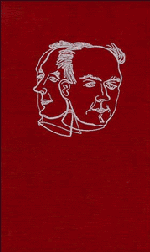Book contents
- Frontmatter
- Contents
- NEW MUSICAL RESOURCES
- PART I TONE COMBINATIONS
- PART II RHYTHM
- 1 Time
- 2 Metre
- 3 Dynamics
- 4 Form
- 5 Metre and Time Combinations
- 6 Tempo
- 7 Scales of Rhythm
- PART III CHORD-FORMATION
- DEFINITIONS OF TERMS
- A NOTE ON THE TYPE IN WHICH THIS BOOK IS SET
- Notes on the text
- Henry Cowell's “New Musical Resources”
- Index
1 - Time
from PART II - RHYTHM
Published online by Cambridge University Press: 05 June 2015
- Frontmatter
- Contents
- NEW MUSICAL RESOURCES
- PART I TONE COMBINATIONS
- PART II RHYTHM
- 1 Time
- 2 Metre
- 3 Dynamics
- 4 Form
- 5 Metre and Time Combinations
- 6 Tempo
- 7 Scales of Rhythm
- PART III CHORD-FORMATION
- DEFINITIONS OF TERMS
- A NOTE ON THE TYPE IN WHICH THIS BOOK IS SET
- Notes on the text
- Henry Cowell's “New Musical Resources”
- Index
Summary
The accepted fundamental unit with which to measure musical time (or duration) is a whole note. Melody, harmony, and counterpoint might conceivably be made up without departing from this simple time-unit. In practice, of course, variety is introduced, and this by well-known methods. One step is to vary the length of the time-unit by subdividing it into half, quarter, eighth, sixteenth notes, etc. The other step is to combine these longer and shorter units into so-called “figures,” which, recurring in a given composition, give it a certain distinctive rhythmical quality.
However great a variety in time effect is made possible by this existing system, certain limitations at once suggest themselves. We are always at liberty to divide a whole note into two halves, a half-note into two quarters, a quarter into two eighth-notes, and so on. And any combination of these lesser time-units is acceptable so long as their sum is the equivalent of the single whole note that we have taken as our base. Rests, subdivided on the same principle as notes, are treated in the same way as their rhythmic equivalents in sounded notes. But if we wish to introduce into a composition a whole measure of normal length divided into three notes of equal length, there is no way of doing so except by the clumsy expedient of writing the figure 3 over three successive half-notes filling a measure. In other words the notes as written down have a certain time-value impossible under the circumstances, and the discrepancy is reconciled by explaining that in reality notes of a different time-value are intended. Were the use of such notes of rare occurrence, this method might be justifiable; since, however, these notes and others having a similar discrepancy in time are very often used, should not an independent method of notation be found for them?
That question may stand for a moment, however, while the subject of time in music is approached from another angle. Assume that we have two melodies moving parallel to each other, the first written in whole notes, and the second in half-notes.
- Type
- Chapter
- Information
- New Musical Resources , pp. 49 - 66Publisher: Cambridge University PressPrint publication year: 1996



